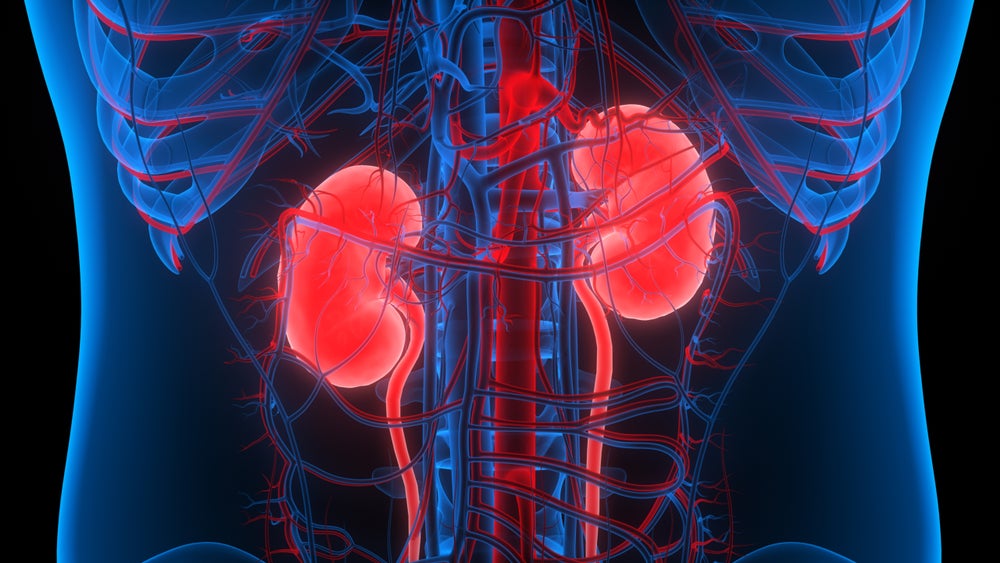
Despite a failed regulatory attempt in the US, updated safety data is still backing the use of the chronic kidney disease (CKD) drug roxadustat in other countries where it is approved.
A pooled analysis of four Phase III studies that evaluated roxadustat, which is being marketed as Evrenzo, was presented in late May at the 59th European Renal Association (ERA) meeting. Roxadustat, an hypoxia-inducible factor (HIF) prolyl hydroxylase inhibitor (PHI), was noninferior to standard erythropoiesis-stimulating agents (ESAs) when it came to the risk of safety signals for major adverse cardiovascular events (MACEs) and MACE+, which is MACE plus congestive heart failure or unstable angina requiring hospitalization.
Astellas Pharma and FibroGen are developing and commercializing roxadustat in Japan, Europe, Turkey, Russia and the Commonwealth of Independent States, the Middle East, and South Africa. FibroGen has collaborated with AstraZeneca to develop and commercialize the drug in the US, China and other countries in the Americas, Australia and New Zealand, as well as Southeast Asia.
“The recent analysis is entirely consistent with the analyses that have already been performed looking at the safety of roxadustat compared to the current standard-of-care treatment, erythropoietin,” says consultant nephrologist at University of Leicester, Jonathan Barratt PhD. “The first patients we’d consider [for treatment] will be those who are not on dialysis and developing anaemia related to CKD. We will want to give this as a treatment option for those patients instead of erythropoietin.” In addition to that, even patients on dialysis who require higher doses of erythropoietin or have become unresponsive to it, will also stand to benefit from a HIF stabilizer, Barratt says.
The UK National Institute for Health and Care Excellence (NICE) is now appraising the clinical and cost-effectiveness of roxadustat used to treat anaemia in CKD patients and is expected to publish its findings by July 13.
“In the incident dialysis [group] and those not receiving dialysis, the drug has no adverse events above what one might expect from the current standard of care of what we currently use in the NHS,” says Barratt.
In the pooled analysis presented at ERA, the hazard ratios for MACE and MACE+ favoured roxadustat—at 0.79 and 0.78 respectively. The statistical details surrounding the hazard ratios are particularly important, given events that transpired last year.
Rocky road to use
On April 6, 2021, Fibrogen announced that previous safety analyses had included “post-hoc changes to the stratification factors”. The company then released an analysis with pre-specified stratification factors, with higher hazard ratios in all the groups. A hazard ratio is a statistical term used to signify the likelihood of an event, in this case-cardiovascular events, occurring.
The next day, Fibrogen’s stock closed at 46% lower than before the news. The company’s market cap is $918.5 million as of June 3.
This was followed by a contentious US FDA Advisory Committee meeting to discuss the drug’s safety and efficacy based on these updated results, which resulted in a 13–1 vote against approval. The FDA then declined to approve roxadustat on August 11. Only a few days later, however, the European Commission approved Evrenzo (roxadustat) to treat symptomatic anaemia seen with CKD, regardless of whether a patient is on dialysis or not.
HIF PHIs were projected as a significant innovation in the CKD space, which has used erythropoietin and ESAs to treat anaemia associated with the condition. In contrast to erythropoietin, which directly stimulates the bone marrow to make red blood cells, HIF PHIs activate the HIF oxygen-sensing pathway to stimulate erythropoietin production, which then corrects the anaemia.
At the heart of the issue is the question of whether roxadustat and other HIF PHIs, increase the risk of MACE. The approach to correcting anaemia in the US is different compared to the rest of the world, as per Barratt. He says doctors in the UK are very comfortable using erythropoietin or an ESA to increase hemoglobin within target levels, which is between 10 and 12. But there is a reluctance to do the same in the US given previous studies that looked at higher target hemoglobin, which elicited a concern that this can be associated with an increased cardiovascular risk, he says.
For its use in the clinic in the UK, Barratt says he will be telling patients that there is no evidence that roxadustat is more harmful than the current standard of care.
Roxadustat was first approved in China in 2018, where AstraZeneca and FibroGen are responsible for its commercialization. This approval was particularly noteworthy since it was one of the first drugs to be approved in that country prior to getting a regulatory nod in Europe or the US. As per FibroGen, net sales in China were $45 million in Q1, 2022. Roxadustat is forecasted to make $585 million in 2028 for Astellas Pharma, as per GlobalData’s consensus forecasts. GlobalData is the parent company of Pharmaceutical Technology.
Still, the FDA decision had a ripple effect on the development of similar drugs and has heightened scrutiny on the safety of other HIF PHIs waiting in the wings to get approval. Akebia Therapeutics, which took on vadadustat as part of its Keryx Biopharmaceuticals acquisition in 2018, has also been on a journey to market its drug. The FDA issued a complete response letter (CRL) stating that the provided clinical data was insufficient for the drug’s approval. Moreover, the agency also had concerns that the drug had failed to meet noninferiority in MACE for the non-dialysis patient population, among other safety issues.
The FDA has accepted the NDA submission for another leading HIF PHI, GSK’s daprodustat, and gave a Prescription Drug User Fee Act (PDUFA) action date of February 1, 2023. In Europe, the drug’s Marketing Authorization Application (MAA) is under review following an EMA validation.
A previous version of this article incorrectly described ESAs as erythropoietin stimulating agents. ESAs are erythropoiesis-stimulating agents.



